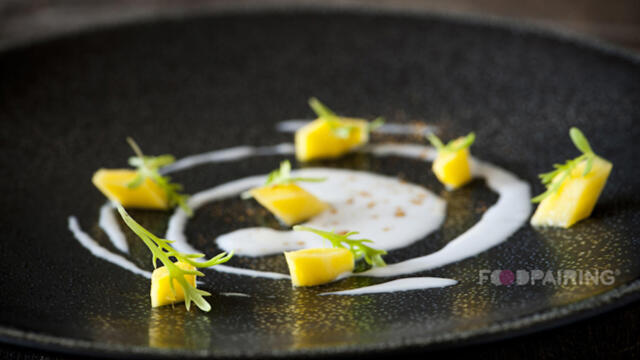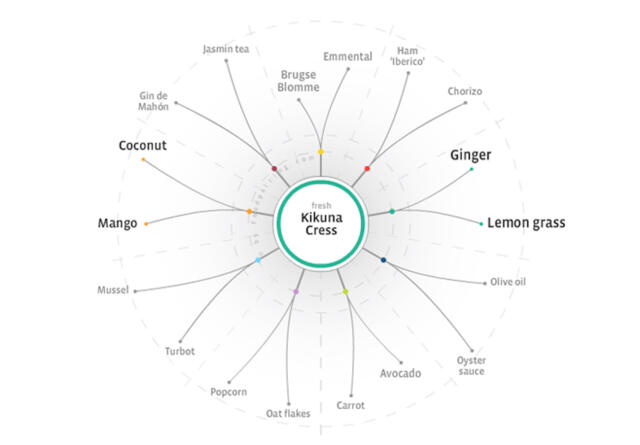
Kikuna Leaves flavour profile
Let us introduce you the - Kikuna Leaves - of Koppert Cress and its flavour profile.
Method
Cresses are often seen as mere decoration. Thats's unfortunate, there is much more potential in these tiny plants and cresses. They can be a functional part of a dish, in this article we’ll prove it. Let us introduce you the - Kikuna Leaves - of Koppert Cress and its flavour profile.
This plant has been used for centuries in Asia, mainly as a herb to flavour dishes. Every part of the plant is edible, but especially the young leaves are preferred. It is a typical Asian plant, with a multitude of uses, as an ingredient and as a garnish, with the distinct flavour of carrot or celery. One of the key odorants of Kikuna Leaves is fresh green, citrus with celery nuances. The afternote is tropical fruit.
Building on these aroma characteristics citrus, ginger, lemongrass and tropical fruits, like mango, make a good match. Kikuna also contains aromas that are also present in peaches, apricots and coconut; this last attribute made us design a variation of the classic Thai coconut soup, an interesting concoction where freshness provided by lime and lemon grass is combined with a healthy dose of pungency from chili and ginger. The soup is traditionally toned down with soothing coconut cream.
Kikuna has a piney bouquet to it which can also be found in mango, this tropical fruit was also incorporated in our dish. As in the previous example, the Kikuna cress functions as a binder, linking all ingredients together.
Source: Food Pairing

Related recipes
Gastronomical masterpieces
Related products
Say yes to the cress